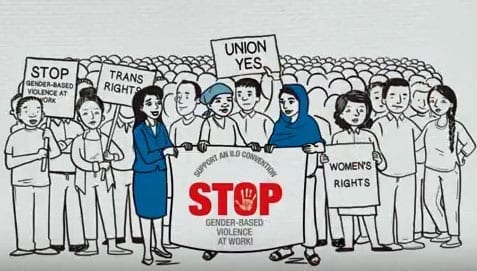
Jul 3, 2018
A global regulation addressing gender-based violence at work is one step closer to reality following a 10-day meeting of workers, their unions and representatives from business and government—but much work must yet be done to ensure its passage.
Participants at the recent International Labor Organization (ILO) conference in Geneva, Switzerland, reached consensus on the need for a convention and recommendation to provide guidance to member states, employers and unions in implementing a global standard to end violence and harassment at work. ILO conventions are legally binding international treaties that may be ratified by member states, and recommendations serve as non-binding guidelines.
Momentum for an ILO convention covering gender-based violence at work follows years of advocacy by the global union movement, an effort led by the International Trade Union Confederation (ITUC).
Leading up to the most recent negotiations, Solidarity Center partners urged their unions, governments and employers to publicly support a binding ILO convention on violence and harassment at work that includes gender-based violence. Their efforts clearly moved countries such as the governments of Tunisia and Cambodia, which both indicated strong support.
With Solidarity Center support, more than a dozen workers—from Brazil, Cambodia, The Gambia, Guatemala, Honduras, Indonesia, Kenya, Mexico, Morocco, Nigeria, Palestine, South Africa, Swaziland, Tunisia and Zimbabwe—participated in the conference. Several took lead roles in the negotiations as part of the workers’ group, including sisters from Kenya and Zimbabwe who ensured gender-based violence remained the focus of discussions.
Violence and Harassment at Work Violates Basic Human Rights
The discussion included defining violence and harassment and assessing whether the final outcome should be a binding convention and a recommendation or only a recommendation.
Marie Clarke Walker, secretary-treasurer of the Canadian Labour Congress, represented the workers’ group. In committee negotiations among workers, employers and government representatives, Walker stated that violence and harassment at work constitutes a serious human rights violation, one that is incompatible with decent work, and one that impinges on the ability to exercise other fundamental labor rights.
Violence and harassment at work affect all occupations and sectors of the economy, including formal and informal work settings, Clark said. She also linked the importance of the negotiations to the current moment, including the #Metoo movement which has demonstrated the prevalence of violence and harassment at work and how it is both tolerated and endured, including by an especially high percentage of women seeking to obtain or maintain employment.
Walker also noted that while violence and harassment affects everyone at work, not everyone is affected in the same way nor on the same scale. Specifically, women and gender nonconforming people experience violence and harassment in disproportionate numbers, underlying the need for the gender dimensions of violence and harassment to be addressed in the instruments.
Countries Confirm Support for GBV at Work Convention
Representatives of several country members, including the European Union and its member states, confirmed their support for development of an effective ILO convention and emphasized that it must promote a gender-responsive approach, focus on prevention and enforcement measures, and improve protections for victims from intimidation and further assault.
The governments of African countries and Mexico also expressed support for a convention and recommendation. Speaking on behalf of the Africa group, the government of Uganda said a convention would leave no doubt about the international community’s commitment to influence domestic legislation.
Mexico’s representative observed that while both women and men were subject to harassment in the workplace, women were experiencing a higher vulnerability due to unfavorable labor market conditions. Further, international legal instruments should seek a general empowerment of women in the workplace, including with regard to sustainable development.
Employers do not want to see violence and harassment in the workplace, said Alana Matheson, the employer’s representative and deputy director of Workplace Relations at the Australian Chamber of Commerce and Industry. Matheson noted that everyone has responsibilities for preventing violence and harassment as well as a right to work in an environment free from violence and harassment.
With the ILO’s final negotiations set for June 2019, workers, unions and our allies will be looking to build on the successes of this year’s committee meeting and negotiations to ensure the strong support by employers, member countries and workers for the need to prevent and address violence and harassment at work results in an inclusive convention and recommendation.
The final convention and recommendation must include a broad definition of violence and harassment, one that includes gender-based violence and an inclusive definition of worker and work where employers, member states and unions share obligations and responsibilities to prevent and address violence and harassment.
Robin Runge, Solidarity Center senior gender specialist, participated in the ILO conference.
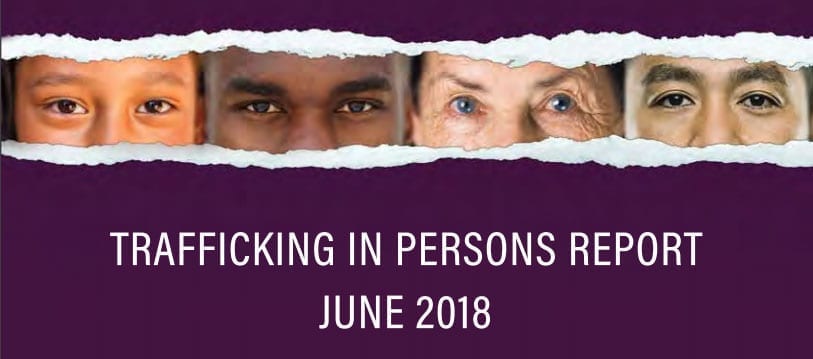
Jun 28, 2018
Myanmar (Burma) and Turkmenistan do not meet minimum standards to address human trafficking and are making no attempts to do so, according to the 2018 U.S. State Department’s 2018 Trafficking in Persons Report released today. The report, which ranks countries based on their government’s efforts to comply with minimum U.S. Trafficking Victims and Protection Act (TVPA) standards, also boosted Uzbekistan from the bottom ranking to the Tier 2 Watch List.

A child works at a silk loom in India. Credit: TIP report
The governments of both Uzbekistan and Turkmenistan annually force public employees and others to labor in the cotton fields. Although Uzbekistan recently has taken steps to end forced labor, the Uzbek government’s upgrade to the Tier 2 Watch List “is premature due to its persistence on a large scale—at least a third of a million people—in the last harvest,” says Bennett Freeman, former deputy assistant secretary of State, Bureau of Democracy, Human Rights and Labor and co-founder of the Cotton Campaign, a broad coalition working to end forced labor in the cotton fields.
Myanmar was downgraded this year from the Tier 2 Watch List, which requires, in part, that countries not fully meeting the TVPA’s minimum standards make significant efforts to do so.
The report also downgrades Malaysia from Tier 2 to the Tier 2 Watch List, addressing the country’s controversial upgrading in 2016 from the lowest ranking. Solidarity Center allies have documented extensive forced labor conditions in Malaysia. The Kyrgyz Republic and South Africa also were downgraded from Tier 2 to the Tier 2 Watch List, which includes countries like Bangladesh, Guatemala, Haiti, Iraq, Liberia, Nicaragua and Nigeria.
Thailand was upgraded from the Tier 2 Watch List to Tier 2.
Profits from forced labor account for $150 billion in illegal profits per year, according to the International Labor Organization (ILO).
The TVPA report organizes countries into tiers based on trafficking records: Tier 1 for nations that meet minimum U.S. standards; Tier 2 for those making significant efforts to meet those standards; Tier 2 “Watch List” for those that deserve special scrutiny; and Tier 3 for countries that are not making significant efforts.
The Trafficking in Persons report, which has been issued annually for 18 years, covers 190 countries and is required by the 2000 TVPA law.
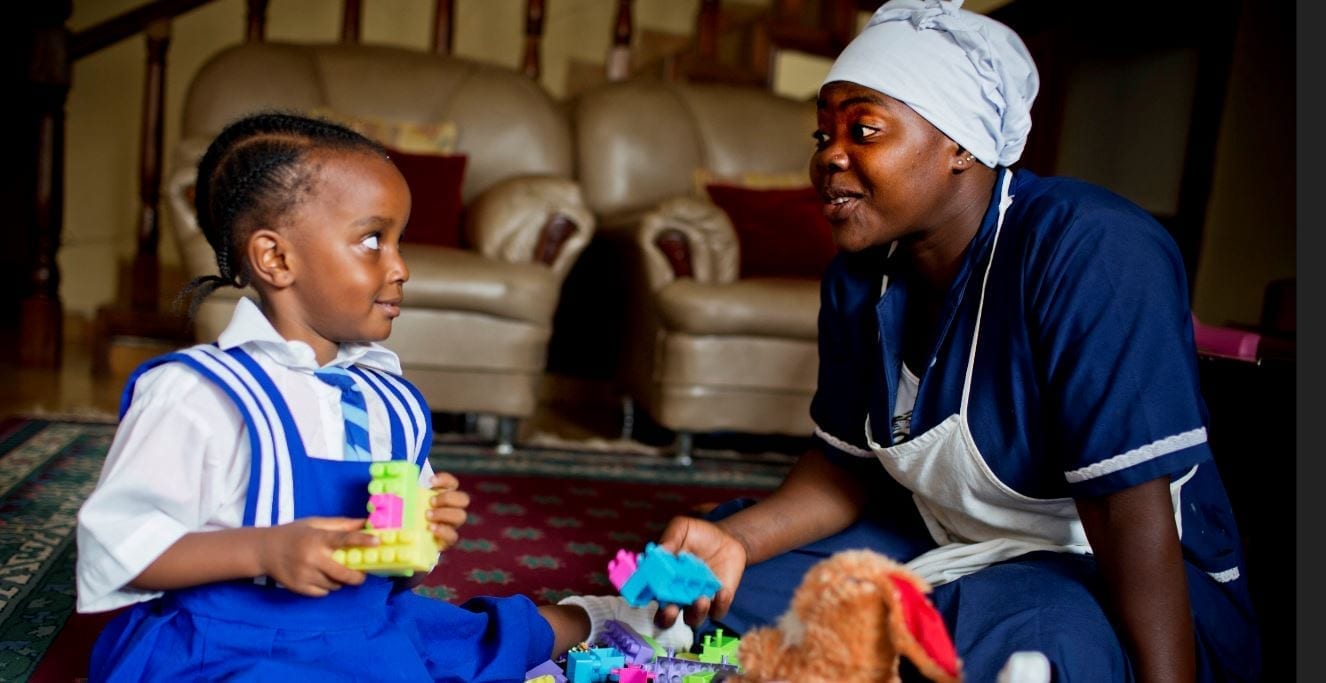
Jun 15, 2018
Domestic workers are at the forefront of change in many countries, highlighted by the adoption of the Decent Work for Domestic Workers convention by the International Labor Organization, and the creation of the International Domestic Workers Federation. Yet this International Domestic Workers Day, 60 million of the estimated 67 million domestic workers do not enjoy social protections attainable through unions and worker associations.
Through our work in countries around the world, domestic workers have told us about their long working hours and poverty wages. Many have been subjected to violence and sexual abuse. Meanwhile, migrant domestic workers—who often leave behind their own children to care for others—try to support their families in countries where they do not speak the language and have little access to justice, if they are physically or otherwise abused.
On June 16, International Domestic Workers Day, we honor the women who make other people’s lives easier. This day, as every day, the Solidarity Center is committed to helping domestic workers attain safe and healthy workplaces, family-supporting wages, dignity on the job and greater equity at work and in their community.
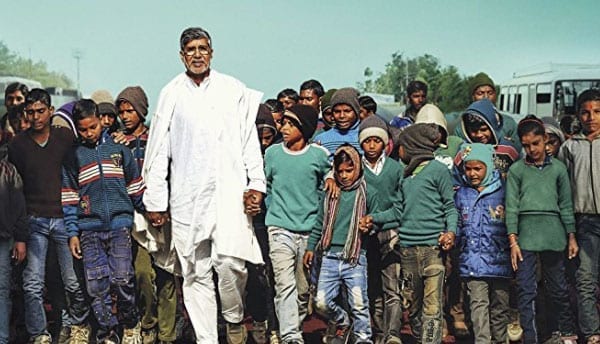
Jun 13, 2018
“I have one single mission: Every child should be free to be a child.”
Nobel Prize winner Kailash Satyarthi proclaimed this ambitious mission in the new documentary, Kailash, which depicts the fight to end child labor through the Global March Against Child Labor and Bachpan Bachao Andolan (BBA), the organizations Satyarthi founded.
In 1994, 150 child labor advocates marched through the southern tip of India chanting, “No more tools in tiny hands. We want books, we want toys,” marking the beginning of a revolution to end child labor. Four years later, Satyarthi and other child labor advocates founded the Global March.

Tens of thousands of children in child labor have been rescued through organizations founded by Nobel winner Kailash Satyarthi. Courtesy: “Kailash”
“We were led by young people, many of whom were child laborers,” said Anjali Kochar, executive director of the Kailash Satyarthi Children’s Foundation. Kochar spoke at the U.S. Department of Labor, one of several locations in Washington, D.C., where the documentary was screened to commemorate 2018 World Day Against Child Labor on Tuesday.
“They demanded their right to childhood,” said Kochar, recalling the march. “They called for the elimination of child labor and for meaningful, quality education. It was truly electrifying.”
Satyarthi began rescuing child laborers in the 1980s. His first rescue attempt was unsuccessful because he was outgunned by human traffickers. Satyarthi then brought to court photos of the atrocities he saw when trying to rescue the children, and a judge then ordered they all be freed.
The more children rescued, the bigger the mission became until more than 200 activists, lawyers and social workers joined Satyarthi in the 1980s to form the BBA, an India-based organization that has rescued more than 80,000 child laborers. Mukti Ashram, the Delhi branch of BBA, provides shelter and education for liberated children.
Demand for Cheap Products Increases Demand for Child Labor
Satyarthi looked at the successes of Mahatma Gandhi, Nelson Mandela, and Martin Luther King Jr. and decided that a “global march” was best for bringing attention to a global problem. The increased demand for cheap products was leading to an increased demand in cheap labor, making abuse and wage theft common in supply chains, especially for women and children. Since The Global March Against Child Labor formed in 1998, the International Labor Organization (ILO) passed Convention 182 on elimination of the worst forms of child labor, child labor in homes was banned in India in 2006 and the South Asian March Against Child Trafficking took place in 2007, where 1 million people marched 3,000 miles to end forced labor.
Although the efforts of Satyarthi, who won the Nobel Prize in 2014 for his efforts, and other global advocates decreased the number of child laborers from 260 million to 152 million in 20 years, there is still more work to be done. Of the 152 million child laborers, 73 million work in hazardous conditions. These children are between the ages of 5 and 17, spending their days in factories and fields instead of in school.
The film reveals the complexity of child labor, illustrating how poverty and education often underly child labor. Parents who are paid very little or are unemployed may need their children to work so their families can survive. Because of the lack of resources, impoverished parents are often uneducated and their children fall prey to traffickers promising work opportunities. The children are taken from their families and forced to work for months or years, escaping with burns and broken bones. This was the case for Sanjeet, who appeared in the film and was rescued by BBA. This young boy was found with dents in his face from hot powder blown by fans in a factory. He had not been allowed to go home in a year.
Acknowledging prior accomplishments as well as the work ahead, Satyarthi created the 100 Million Campaign in 2016, which seeks to mobilize 100 million young people to fight for 100 million child laborers. This program will not only benefit the children still suffering under forced labor but will provide a legacy so that future generations can continue to tackle this issue.
“We all have to work to globalize compassion,” says Satyarthi when discussing how movements make change. “Every child has the right to bread, education, love and play.”
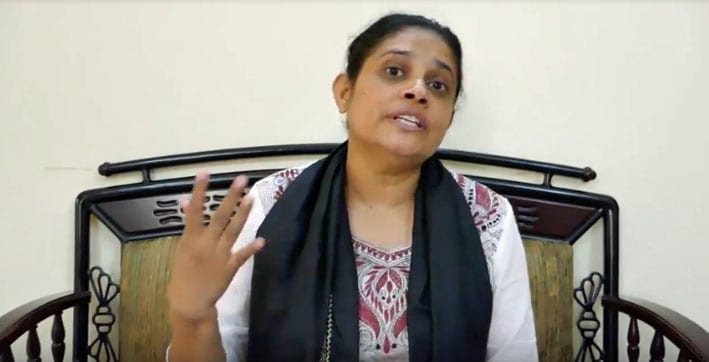
Jun 12, 2018
Bangladesh garment worker and union leader Nazma Akter is among women challenging obstacles to leadership in their unions, their workplaces and their communities.
Founder and president of the AWAJ Foundation and Sommilito Garments Sramik Federation, Nazma says “Women in Bangladesh, especially at the grassroots, are taking the initiative for leadership and we hope it will be more and more.”







